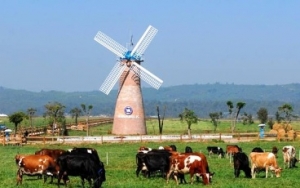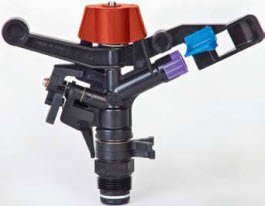Health and Welfare
Voluntary Wait Periods (VWP)

A schematic lactation graph. Area highlighted by red frame is the graphic representation of the cost of a day open.
From a theoretical economic perspective, each cow should conceive exactly seven months prior to the breakeven point of milk revenue and all costs associated with keeping her in the herd (in graph above, this is the point in which the ‘milk revenue’ line crosses the ‘costs’ line). At that point she should be dried-off to prepare for her next lactation. The cost of a day open quantifies a scenario in which the need to dry-off a cow will be at a date later than that breakeven point (in red square above).
To further expand on maximizing individual cow contribution, no two cows are alike in their milk production characteristics and the actual shape of the lactation curve is determined by two factors: peak milk level and persistency.
Schematic lactation curves of two cows with different peak milk levels.
Recognizing that individual milk production characteristics of cows are different means that their lactation curves will assume a different shape. Therefore, their ideal time of conception within their individual lactations will be different in order to maximize each cow’s economic contribution to its fullest.
So why are we so hung up on a 60-day VWP?
The approach of starting to breed cows as early as possible in the lactation is due to inefficiency of the process of getting cows pregnant. Once the cow’s uterine involution is complete, we are off to the races to get them bred. It’s believed that cows that conceive later in their lactation are at risk to be dried-off when milk revenue will be lower than the cost of keeping the cow at the tail-end of the lactation.
Daily individual milk-weights can farmers get some clarity on the urgency of pregnancy for an individual cow.
The attempt to work back from a desired date of dry-off to pinpoint the day of breeding and conception is a risky approach. We don’t really know what the future will bring in terms of an individual cow’s future milk production levels. Too many things can happen that will affect her individual breakeven point.
Then what is the ideal VWP?
When a herd has a high degree of control over reproduction, when it averages two services per conception or less, the most common approach is to let the individual cow tell us her ideal VWP by showing heats.
Many electronically monitored herds will begin to breed a cow on her second heat in the lactation. Non-cycling cows are evaluated on the basis of their health and milk production before a decision is made to treat them or just wait until they do show a heat.
What are your thoughts on flexible VWP? Let us know in the comments below!
















